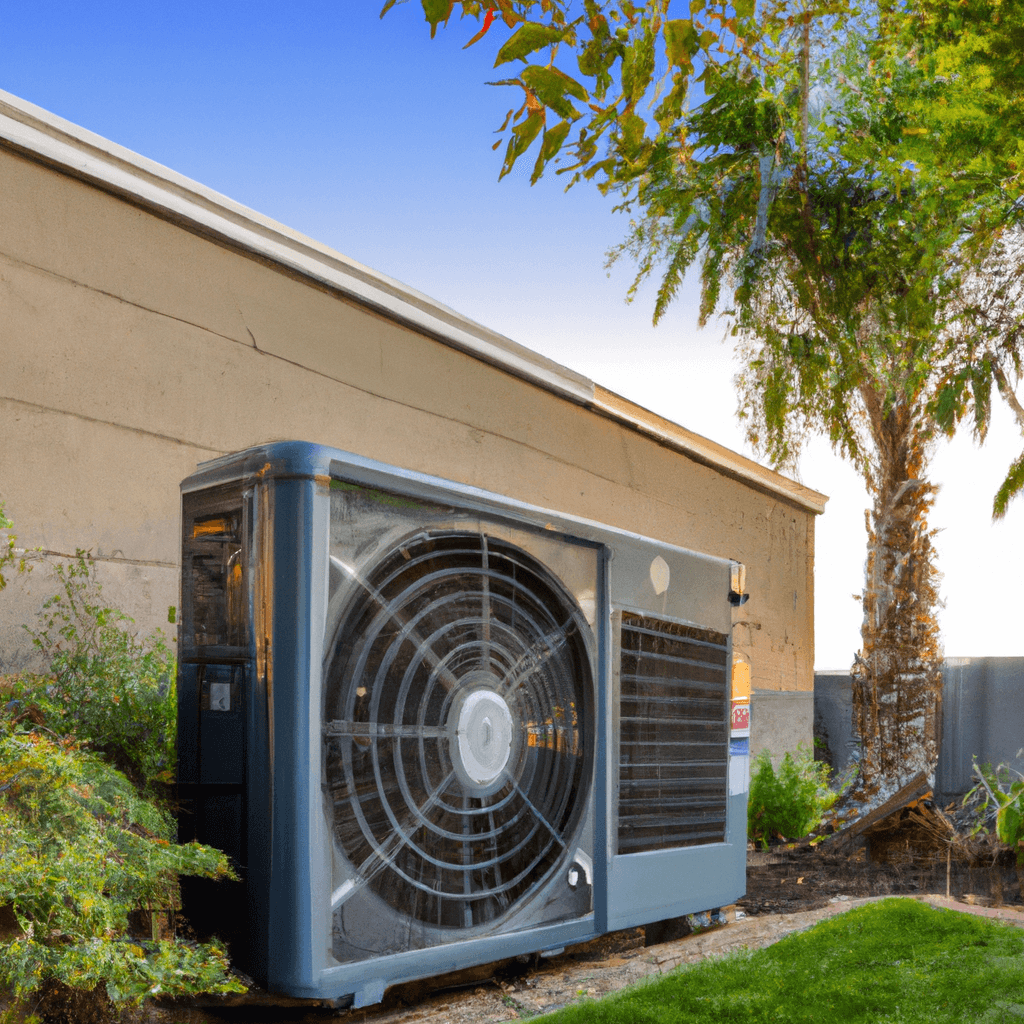AC Capacitor Replacement: How and When to Do It
Air conditioners are part of life in the modern world, and so is the maintenance that goes along with keeping these appliances in peak condition. When an AC unit stops working, homeowners often assume it is time to call for appliance repair. However, one of the most common culprits for air conditioner malfunctions happens to also be one of the most crucial, yet easily replaceable, parts in an AC system: the capacitor. Knowing when and how to replace AC capacitors can save homeowners time and money by addressing a simple issue themselves.
What is an AC Capacitor
An AC capacitor is a device used to store electrical energy and improve the functioning of an AC unit. This vital component helps the compressor, blower fan, and outdoor fan motor to run at a particular frequency and produces a powerful jolt of electricity that helps the AC components to come on. Without a capacitor, none of these components will power properly.
At times, a malfunctioning capacitor may become swollen or bulging, indicating a breakdown. Adding an additional capacitor can also help improve the power of an existing AC system.
How to Tell When an AC Capacitor Needs Replacing
A reliable way of determining when an AC capacitor needs to be replaced is by looking at its physical state. If the capacitor is swollen or bulging and it is still unable to start the AC unit, then it will need to be replaced. Additionally, if the air conditioner is cycling on and off intermittently or the fan motor is seemingly stuck in one position, then it likely means the capacitor has malfunctioned.
In these cases, replacing the capacitor is a straightforward way of restoring the air conditioner to proper working order. The best way to assess the quality of the capacitor is to remove it from its casing and to inspect it for any physical deformities.
How to Replace an AC Capacitor
When it comes to replacing an AC capacitor, the safest and most reliable route is to contact a qualified AC technician for assistance. However, for those who feel comfortable enough, replacing the capacitor may be an option.
Before invoking a DIY replacement, it is important to check the voltage rating of the new capacitor against that of the old one. Generally, all capacitors should have a black and white colored tone and a figure printed on the side, indicating their respective voltages. It is also important to note that AC capacitors, whether they are old or new, can contain an electrical charge – even after disconnecting the AC power – and so proper precautions should be taken.
Replacing an AC capacitor essentially involves disconnecting the old capacitor and then connecting the new one in its place. The wires that were connected to the old capacitor should be reconnected to the new one by color-coding. Black wires should be connected to black terminals and red wires to red. Once reconnected, the AC should start up normally.
If the capacitor fails to start the AC unit after being replaced, it is likely that other components may have malfunctioned or that the unit is not receiving enough power for it to power up. In either case, it is best to contact a local appliance repair technician for further assistance.
Conclusion
AC capacitors are a crucial component in an AC system, and so replacing them in a timely manner can help to extend the life of an AC system and keep it running smoothly and efficiently. By understanding the basic mechanics of AC capacitors and how to determine when they need to be replaced, homeowners can save both time and money. For those who lack confidence to replace a capacitor themselves, it is best to call a qualified appliance repair technician for further assistance.



AC Capacitor Replacement: Best Practices and Solutions
Replacing an AC capacitor is an essential step to ensure proper operation of your air conditioning system. With proper maintenance and care, you can avoid costly and inconvenient issues as well as avoid premature replacement. Here are a few tips and best practices to follow when it comes to AC capacitor replacement.
Manufacturer Recommendations
It’s important to check with any manufacturer recommendations regarding the electrical components of your air conditioning system. Manufacturer’s recommendations can vary, but they generally advise the following:
-
Replace AC capacitors with recommended voltage and capacitance ratings. Ensure that the rated voltage of the new capacitor is the same as the rated voltage of the old capacitor, and that the capacitance is within recommended values.
-
Check for any signs of corrosion or damage on the terminals of the capacitor. If corrosion is present, the capacitor should be replaced to ensure optimal performance of the air conditioning system.
-
Ensure the new capacitor is securely mounted and electrically connected to the fan motor and compressor. It should also be securely fastened so it will not loosen or move free during operation.
Local Appliance Companies
Your local appliance company can also provide you with advice and recommendations for proper care and maintenance of your air conditioning system. It is important to have your system professionally serviced by an experienced contractor, who can check the levels of refrigerant, check for any leaks, inspect the air handler and look for signs of wear and tear.
-
Inspect the AC capacitor for any signs of damage or corrosion. If the capacitor appears to be damaged, it should be replaced immediately.
-
Ensure that all connections are secure and that all wiring is properly connected. Verify that the correct size and type of wire is used to ensure that all connections are functioning properly.
-
Check the refrigerant levels regularly. Low refrigerant levels can be indicative of a leak and should be addressed immediately.
HVAC Technician’s Recommendations
If you are having issues with your air conditioning system, it’s wise to contact a qualified HVAC technician. An experienced technician will be able to diagnose and repair any issues with the system, and provide you with advice and tips to ensure optimal performance.
-
Ensure the terminals of the AC capacitor and the compressor terminals are clean and properly connected. Contact plates, electrical wires and other components should be checked for signs of corrosion or damage.
-
Check for any signs of refrigerant leakage. If refrigerant levels are low, it could indicate a leak and should be addressed immediately.
-
Check the capacitor for correct voltage and capacitance ratings. If the capacitor is not rated for the correct voltage, it should be replaced to ensure proper operation of the system.
Replacing an AC capacitor is an important step to ensure that your air conditioning system is running efficiently and reliably. Following manufacturer recommendations, consulting with your local appliance company, and seeking the advice of a qualified HVAC technician can help reduce the risk of premature replacement and costly repairs.
Average AC Capacitor Replacement Cost
Replacing an AC capacitor typically requires installation of a new run capacitor or a dual run capacitor, which can include a start capacitor or a combination of both. The minimum repair cost in California is usually around $170, but can increase up to 20% due to market conditions. Complex replacements may come with a higher price tag of over $400, depending on the parts required and availability.
When having an AC capacitor replaced, some parts that may be required are a new run capacitor, a start-run capacitor and other materials including wiring, conduit and tubing. A professional AC technician will also assess any damages and select the necessary replacement part.
It is advisable to call a reliable AC company such as Local Reliable Air Conditioning & Heating for accurate estimates. The specialists can provide an itemized list of parts and services needed for the job, including the cost of materials, and any additional details required for the job.
AC capacitor replacement is an important task to undertake. By hiring the services of a skilled technician, the job will be done quickly and efficiently, and with little or no disruption to the comfortable environment of your home or office.
Get The Most Reliable AC Capacitor Replacement
Reliable Air Conditioning & Heating is a family-owned business providing full HVAC repair and installation for California customers. Their highly trained technicians have at least 5 years of experience in the AC capacitor replacement field, and they make sure that their workmanship is of the highest quality.
Reliable Air Conditioning & Heating offers same-day services with a 90-day warranty on all repairs. This gives customers the convenience and peace of mind they need when dealing with their often needlessly complicated home appliances. Additionally, the company only uses quality parts to ensure maximum safety and efficiency.
By choosing Reliable Air Conditioning & Heating, you can rest assured knowing that you are receiving exceptional customer service. Their technicians are friendly, helpful, and informative. Furthermore, their customer service departments are always available to answer any questions customers may have.
If you’re looking for a reliable, efficient, and affordable air conditioning solutions, then look no further than Reliable Air Conditioning & Heating. Their commitment to providing high-quality services, customer satisfaction, and affordable pricing makes them the ideal choice for all your AC capacitor replacement needs.
FAQ about AC Capacitor Replacement
How and When to Do It?
It’s important to replace your AC capacitor on a regular basis to ensure it’s running efficiently. The best time to do this is before the hot summer months when your AC unit is running at its peak performance. This can help avoid costly repairs and downtime. Before attempting replacement, consult a professional technician and have them inspect your system and perform the appropriate tests.
What Is an AC Capacitor?
An AC capacitor is a device that helps to regulate the flow of electricity to the motor of your air conditioner. It works by gradually increased current in order to initially start the motor and then maintaining the current in order to maintain the motor’s speed. Without the capacitor, it would take longer the motor to start and would not be able to provide a consistent speed for cool air.
What Are Warning Signs a Capacitor Is Failing?
Common symptoms of a failing AC capacitor are decreased in energy efficiency, increased energy bills, inconsistent cooling, and unusual noises from the unit. If you see or hear any of these signs, consult a professional technician and have them inspect your system and determine if a capacitor needs to be replaced.
When Should I Replace My AC Capacitor?
Most air conditioners should have their capacitors replaced every two to four years. If your system is older and has not been maintained regularly, it may need to be replaced more often. It is also important to inspect and replace the unit if it sustains physical damage due to extreme weather conditions, or if you notice any signs of corrosion.
What Are the Benefits of Replacing an AC Capacitor?
There are a variety of benefits to replacing your AC capacitor including improved efficiency, reduced energy bills, and extended life of your unit.
For more information or assistance with AC capacitor replacement, contact Local Reliable Appliance Repair at (866) 311-8590.

